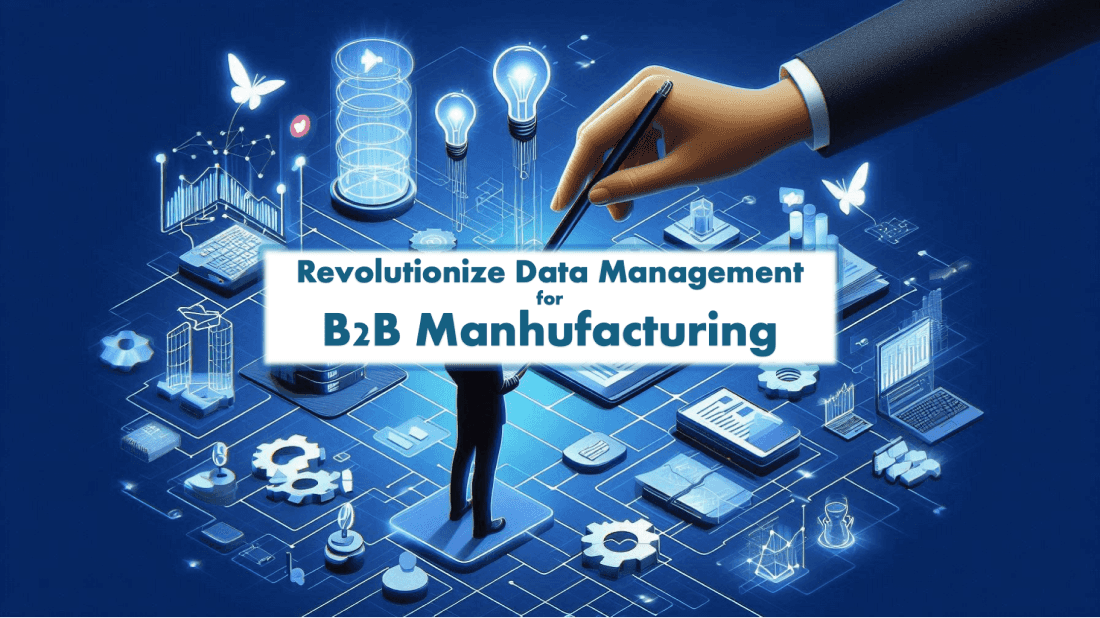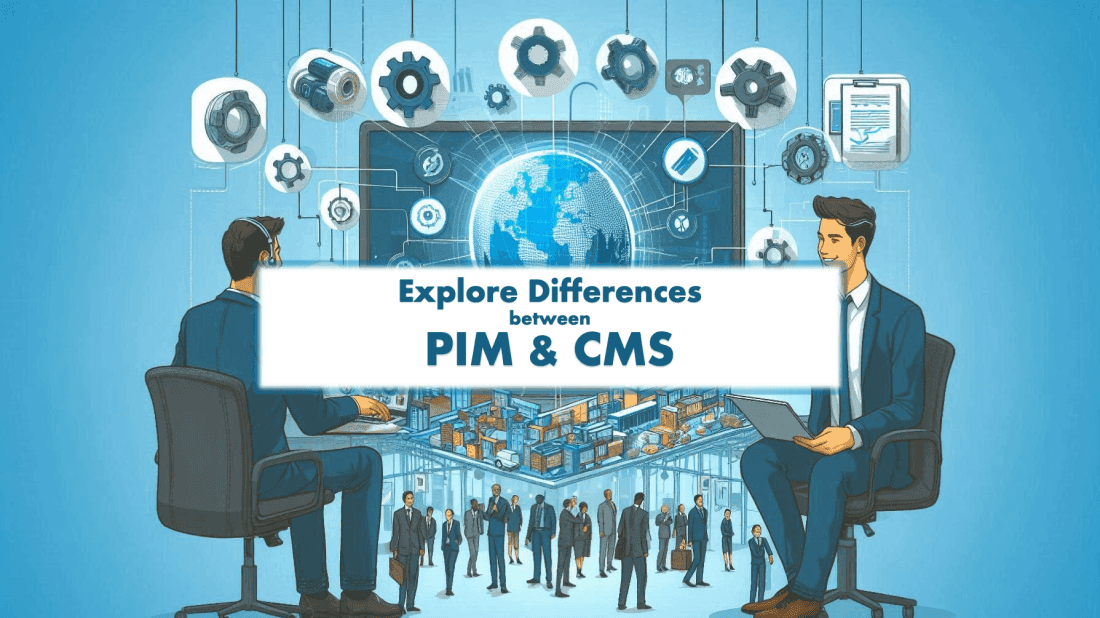Jan 28th, 2024
Saas vs Open Source Pim For E-commerce Comprehensive Guide
Categories:Product Information Management SystemConsumer and product experience have always been critical success factors for e-commerce and manufacturing companies.
The Pandemic years have highlighted the importance of utilizing product data to improve customer satisfaction. This is where PIM offers a complete solution for both OEMs and e-commerce businesses.
Across the world OEMs and e-commerce platforms are eager to grab on to the PIM platforms. PIM gives OEMs and e-commerce businesses a competitive advantage, and all players must maintain this parity to survive in data driven markets.
The challenge now, is about selecting the perfect PIM solution. Companies with deep pockets and proprietary concerns prefer to develop in-house PIM software solution. Large businesses in the US and Canadian markets prefer an inhouse PIM solution (Allied Research).
However, developing an inhouse PIM software is an uphill task for small, medium, and start-up businesses. SaaS and open-source PIM solutions promise to solve the fixed cost variable problem for these players.
Thus, SaaS vs Open-Source PIM question is one of the critical decision factors for SMEs and startup businesses.
What is a SaaS PIM?
SaaS PIM is a Product Information Management system hosted on cloud servers. The cloud-based PIM offers software access to the businesses through a subscription model. hosted and managed by a third-party provider. Cloud-based PIM model offers scalability, flexibility, and cost-effectiveness for users. Also, stakeholders at the OEM and e-commerce business can access the platform from any location with an internet connection.
Key features of PIM help OEMs and e-commerce businesses in optimizing product data for sales and marketing channels. SaaS PIM tool offers several other benefits to the small but fast-growing businesses.
Features & Benefits of SaaS PIM
Cloud-based or SaaS PIM offers several features suitable for fledgling businesses. Here are some of the prominent features of SaaS PIM system small, medium, and startup OEMs and e-commerce businesses should know:
- Centralized Product Data Storage: Store and manage all product data in a centralized repository accessible from anywhere. This master data works as a single source of truth for the OEM or ecommerce business.
- Data Enrichment Tools: You can add tools for enhancing product data quality, including data validation, normalization, and enrichment
- Integration Capabilities: You can integrate SaaS PIM with e-commerce platforms, marketplaces, ERP systems, and other business processing apps.
- Real-time Collaboration: Cloud based PIM enables multiple users to collaborate on product data management tasks simultaneously, ensuring accuracy and efficiency.
- Automated Workflows: Define and automate workflows for product data creation, enrichment, approval, and publishing processes.
- Role-based Access Control: The PIM system allows control over user permissions for managing product information. You can control the access rights based on roles and responsibilities.
- Version Control: Track changes to product data and maintain a history of revisions for audit and compliance purposes.
- Data Governance: Enforce data governance policies to ensure data integrity, security, and compliance with regulatory requirements. Policy based updates ensures accurate product information.
- Analytics and Reporting: Generate insights into product performance, data quality metrics, and user activity through customizable dashboards and reports.
- Scalability: Scale the PIM solution according to business needs, accommodating growth in product catalog size and user base.
- Security: Implement robust security measures to protect sensitive product data. This includes encryption, access controls, and regular security audits.
- Vendor Support and Maintenance: Receive ongoing support, maintenance, and updates from the SaaS PIM vendor, ensuring the platform remains up-to-date and functional.
- Mobile Accessibility: Access the PIM platform via web browsers or dedicated mobile apps, enabling remote access and flexibility for users on the go.
- Customization Options: Tailor the PIM solution to specific business requirements through customizable fields, workflows, and user interfaces.
- Subscription-based Pricing: Pay for the PIM solution on a subscription basis, typically on a monthly or annual basis, with predictable costs and no upfront investment in infrastructure or software licenses.
What is Open-Source PIM?
Open-Source refers to a software or technology whose source code is made available to the public. The greatest advantage and USP of an open-source technology is that users can view, modify, and distribute the software freely. Open-Source PIM solutions empower businesses to customize the software according to their needs.
Thus, open-source PIM offers flexibility, transparency, and cost-effectiveness for businesses with development expertise. Businesses can also collaborate with the community to enhance features, fix bugs, and contribute to the ongoing development.
Open-Source PIM advantages include lower fixed costs, lack of licensing fees, and the freedom of modification. Thus, even the smaller businesses can benefit from the collective intelligence of the open-source community.
Features & Benefits of Open-Source PIM
- Freedom to Modify: Open-source PIM solutions offer flexibility for users to modify the source code and build custom PIM solutions
- Full Transparency: With source code access, users have full visibility into how the software functions.
- Cost-effectiveness: Open-source PIM eliminates the need for licensing fees which is a major cost factor with proprietary software. Thus, it is a cost-effective solution to start building their PIM solution.
- Community Support: These PIM platforms benefit from a large and active community of developers, users, and contributors who provide support, share knowledge, and collaborate on improvements.
- Scalability: This solution can scale to accommodate growing product catalogs, user bases, and business needs without incurring additional costs or limitations.
- Interoperability: Open-source PIM platforms often integrate seamlessly with other open source and proprietary software, facilitating interoperability and data exchange across different systems.
- Security: Open-source product information management tools benefit from community-driven security audits, rapid bug fixes, and the ability to implement custom security measures.
- Innovation: The open-source model fosters innovation by encouraging experimentation, collaboration, and the development of new features and functionalities by a diverse community of contributors.
- Vendor Independence: By using open-source PIM, businesses are not tied to a single vendor or proprietary ecosystem, giving them greater freedom and autonomy in managing their PIM solutions.
- Long-term Viability: Open-source PIM solutions are built on established technologies and standards, ensuring their long-term viability and compatibility with evolving business needs and industry trends.
SaaS vs Open-Source PIM
The following table gives a comparison between SaaS PIM and Open-source PIM based on various factors, including licensing, customization:
| FEATURES | SAAS PIM | OPEN-SOURCE PIM |
|---|---|---|
| Licensing | Subscription-based model | Free and open source |
| Customization | Limited customization options | Highly customizable |
| Deployment | Hosted on vendor's servers | Self-hosted or cloud-hosted |
| Accessibility | Accessible from anywhere with internet | Requires installation and setup |
| Updates | Managed and updated by vendor | Community-driven updates and contributions |
| Support | Vendor-provided support | Community support and forums |
| Cost | Monthly or annual subscription fees | No licensing fees, but costs for hosting |
| Scalability | Scalable based on subscription plan | Scalable based on infrastructure |
| Compatibility | Import and use structured and unstructured data | Customize to integrate or import data from different sources |
| Security | Vendor-managed security measures | Community-driven security audits |
| Integration | Integration with select platforms | Integration with various platforms |
| Transparency | Limited transparency | Full access to source code |
| Innovation | Dependent on vendor's roadmap | Driven by community contributions |
Selecting a PIM Software for E-Commerce
Both open-source and cloud-based PIM software offer various advantages to the users. However, e-commerce businesses should carefully consider their options while choosing the right PIM system considering their core identities.
The following table compares the advantages and disadvantages of SaaS and open-source product information management solutions:
| Features | SaaS PIM | Open-source PIM |
|---|---|---|
| Customization | Tailoring requires service provider flexibility | Tailoring PIM requires technical expertise |
| Control | Software updates depends on service provider | User is responsible for maintenance and updates |
| Dependency | Dependency on the vendor for support and updates | Dependency on community support and potential lack of formal support |
| Scalability & Skills | Limited scalability based on subscription plans | Scalability is limited by hardware resources and technical expertise |
| Data Security | Good vendor selection necessary for sufficient data security | User must build inhouse expertise for data security |
| Cost | User costs are variable depending on usage and features | User must incur both fixed and variable costs for setup and maintenance |
Advantages of SaaS PIM
Sifting through the features and needs of implementing open-source PIM, you can easily see that users without adequate technical expertise may struggle. Open-source PIM solutions are more suitable for those e-commerce businesses who have adequate inhouse skills to customize the code.
Compared to the open-source PIM, SaaS PIM is faster and easier to integrate with your existing content management and workforce. Additionally, open-source PIM is more suitable for businesses looking to build a proprietary PIM platform but lack the appetite for full development costs.
Thus, SaaS PIM platforms are more suitable for businesses focused on e-commerce operations. Whereas open-source PIM are suitable for businesses looking to develop PIM systems of their own, or at least have the skills required to tailor the solution.
SaaS PIM is the Future
SaaS PIM solutions for businesses like Neurologik’s ProductHub combine several functional modules with PIM to offer a superb information management platform. ProductHub combines the features of PIM with product life cycle and digital asset management (PLM and DAM). NLK’s ProductHub creates accurate product data using the existing structured and unstructured data using the latest AI layers.
ProductHub simplifies content management for e-commerce businesses to the extent where platforms can save up to 90% of their time listing and publicizing a new product. You can create, enrich, publish, and distribute your product information over different channels.
NLK’s ProductHub simplifies and brings to speed go-to-market operations for OEMs and e-commerce platforms selling complex products. This cloud-based PIM software allows for unlimited product attributes and catalogues.
So, if you are looking to automate your entire sales funnel, ProductHub can make it possible. Also, platform’s ability to convert your product info into regional languages enables you to break the boundaries and address cross-border markets.







